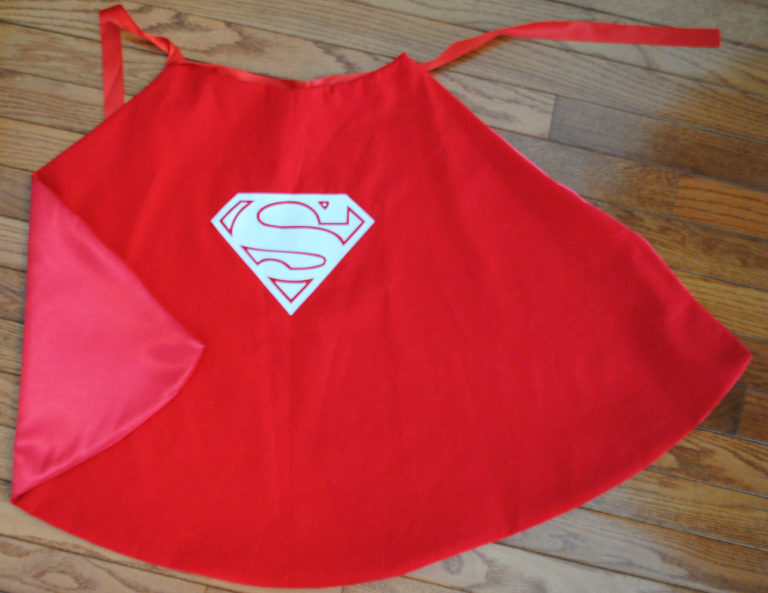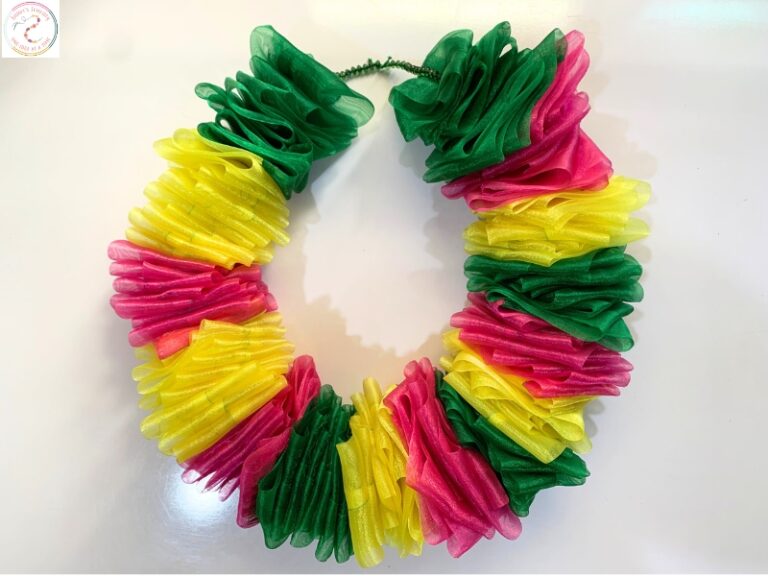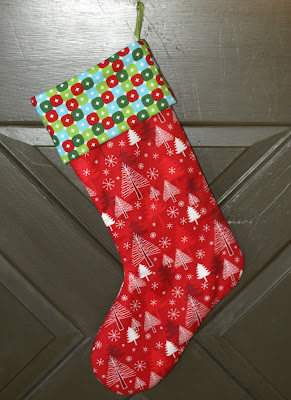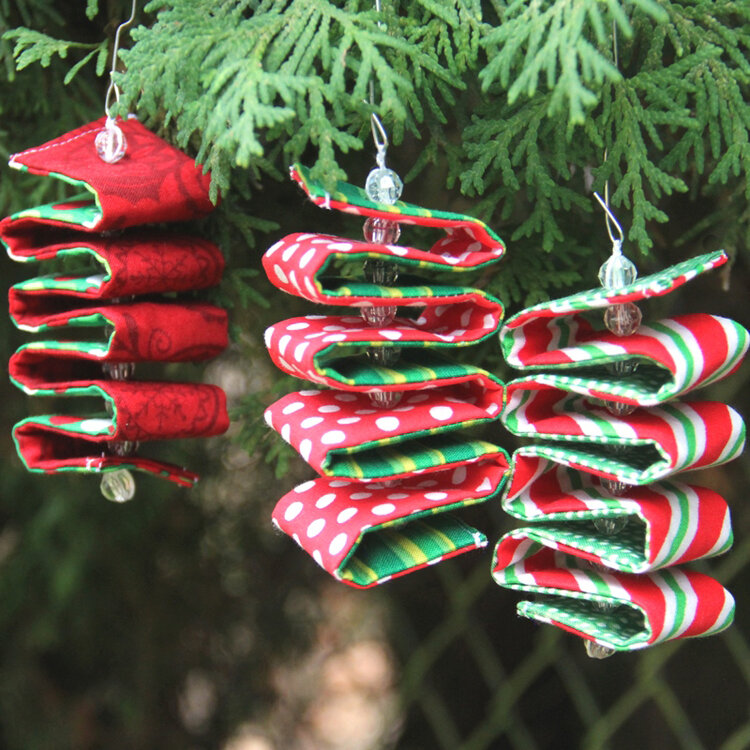1. Bowl Cozies
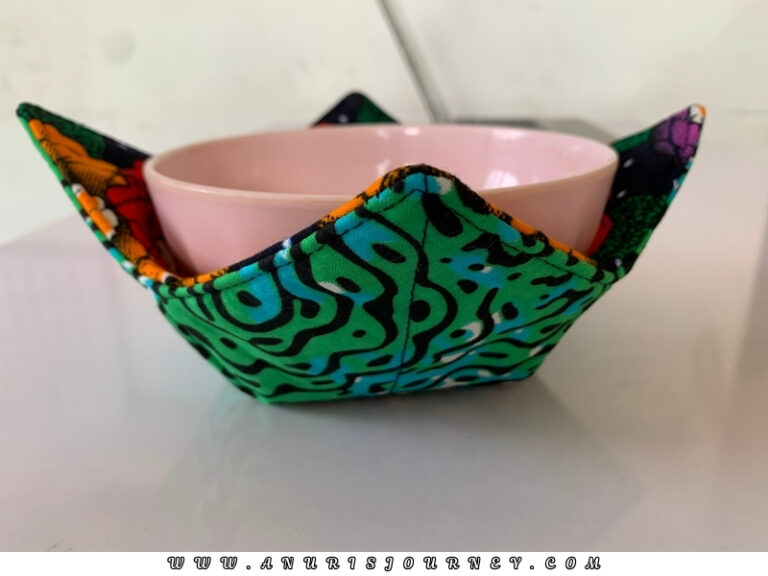
See tutorial:
They are fabric holders that cradle a bowl so you can handle hot soup or cold desserts without burning or freezing your hands. They can even stay in the microwave with the bowl.
It is made of 100% cotton fabric (two layers), 100% cotton batting, cotton thread (to ensure microwave safety).
To make it, sew two fabric squares with batting inside, stitch darts in each corner to form the bowl shape, then join them together.
Some variations are seasonal fabrics (Christmas, fall, floral, modern prints). Sizes for soup bowls, cereal bowls, or even large serving bowls.
They’re cute, practical, make affordable gifts, and appeal to all age groups.
2. Reusable Bowl Covers

These are cute easy sewing projects to make and sell at craft fairs. Fabric lids with elastic edges that fit over bowls to keep food covered, a reusable alternative to cling film or foil.
It is made of cotton fabric, elastic, optional waterproof lining (PUL) or beeswax-coated cotton for added protection.
It is made by cutting circles of fabric slightly larger than the bowl, sew a casing, insert elastic, and gather it snugly.
Variations are single-layer cotton for dry foods, waterproof-lined for leftovers, or themed prints (picnics, kitchen décor).
They are eco-friendly, useful for outdoor events (keeps bugs away), and highly attractive to zero-waste customers.
3. Fabric Coasters
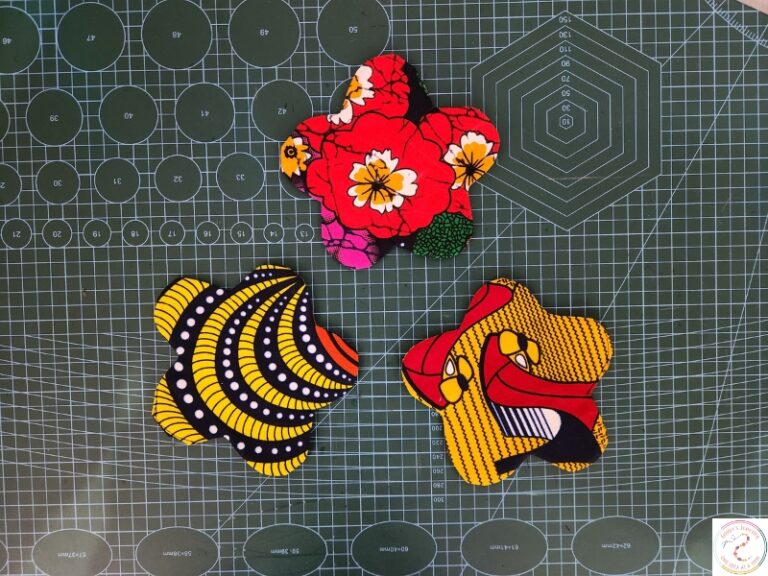
See tutorial:
These are small pads placed under cups/glasses to protect surfaces from heat, moisture, or scratches.
They can be made with cotton fabric, interfacing or batting for thickness, optional decorative stitching or quilting.
They are made by sewing two small fabric squares with batting in between, turn, and topstitch.
Some variations are patchwork coasters, embroidered monogram coasters, or reversible designs. Often sold in sets of 4 or 6.
They are inexpensive, quick to make, and great as impulse buys or stocking stuffers.
4. Pot Holders & Oven Mitts

See tutorial:
They are heat-resistant pads or mitts for handling hot cookware safely.
They are made of cotton fabric, Insul-Bright (heat-reflective batting), cotton batting, bias tape for edging.
They are made by quilting fabric + batting layers, stitch into square/round shapes, finish with bias tape.
Oven mitts require shaping and turning. Variations are Matching kitchen sets (with towels, napkins), novelty shapes (hearts, mittens).
They are essential kitchen item, especially as gifts. Buyers love themed or matching sets.
5. Tea Towels with Fabric Accents
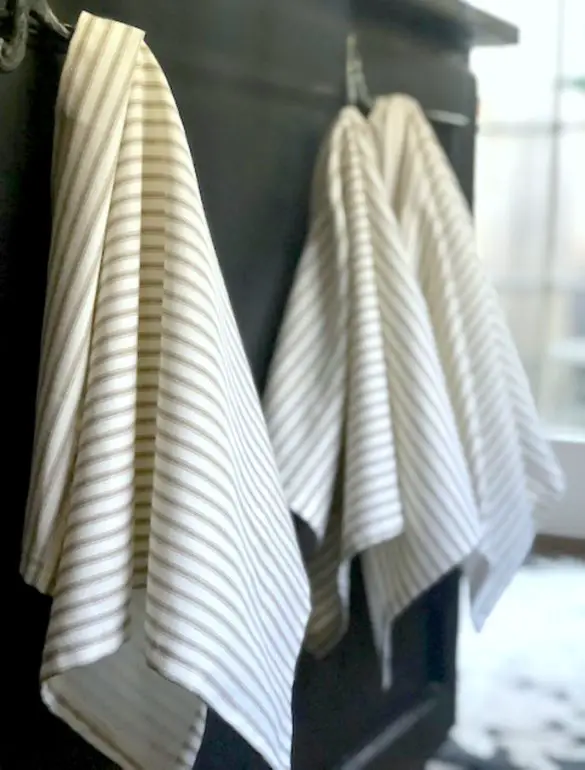
See tutorial:
They are one of the easy sewing projects to make and sell at craft fairs. They are cotton towels for drying dishes, with decorative trims, appliqué, or fabric accents to make them special.
They are made with cotton or linen towels (or fabric yardage to hem into towels), accent fabrics, lace, or appliqué designs.
They are constructed by hemming plain cotton rectangles into towels, then sew on fabric strips, patchwork bands, or embroidery.
Variations are seasonal themes (Christmas trees, Easter bunnies), farmhouse style (checks, florals), or custom embroidery.
They are everyday usefulness combined with decorative appeal. They’re perfect “functional gifts.”
6. Aprons (Full or Half)
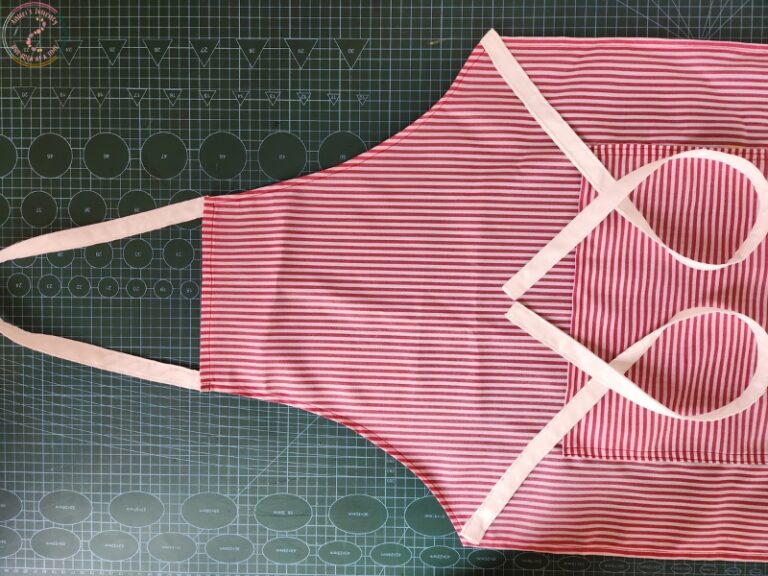
See tutorial:
These are protective garment worn while cooking, baking, gardening, or crafting. Half aprons tie at the waist, while full aprons cover the torso.
They are made of cotton, denim, canvas (for sturdiness), fabric ties or ribbon, optional pockets.
To make it, make simple rectangles with ties (half aprons), or bib-style aprons with neck/waist straps (full aprons).
Some variations are reversible aprons, patchwork aprons, kids’ aprons, holiday-themed.
They are always popular as gifts, especially for bakers, moms, and hobbyists. Half aprons are faster to make and sell well at lower price points.
7. Microwave Potato Bags
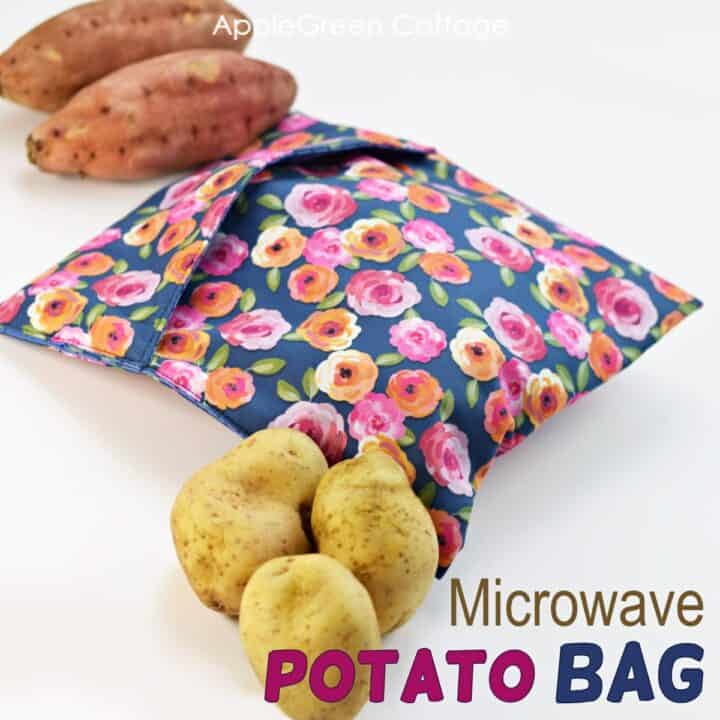
See tutorial:
They are fabric bags that cook fluffy baked potatoes in the microwave by holding in steam. Can also be used for corn or tortillas.
They are made of 100% cotton fabric (inside & outside), 100% cotton batting, cotton thread (no polyester).
To make it, sew a lined fabric pouch with batting, leaving a flap closure.
Some variations are fun food-themed fabrics (potatoes, vegetables, country prints).
They are quirky, useful kitchen gadget that intrigues customers. They’re niche but very giftable.
8. Table Runners or Placemats
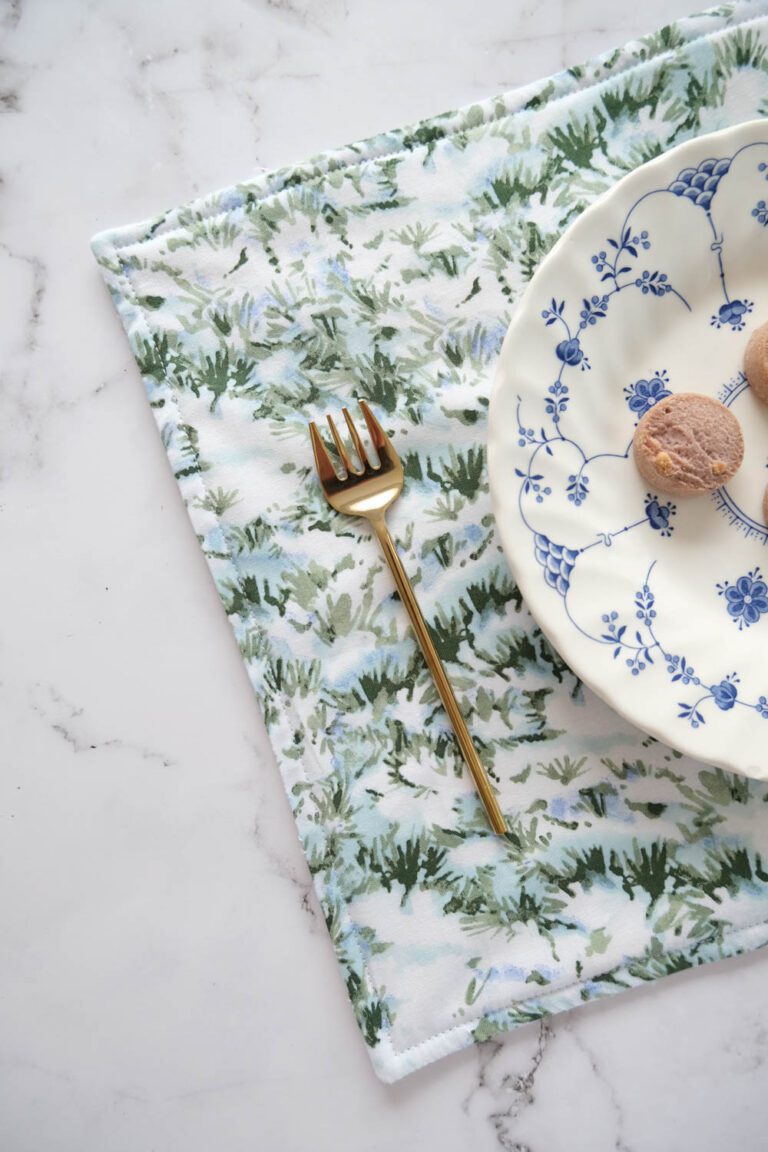
See tutorial:
These are easy sewing projects to make and sell at craft fairs. They are decorative fabric pieces that protect and beautify dining tables. Runners go lengthwise across the table; placemats sit under each place setting.
They are made of cotton, linen, or canvas fabric, optional batting/interfacing for structure.
To make it, make a long fabric rectangles, sometimes quilted or reversible. Placemats often come in sets of 4 or 6.
Some variations are seasonal themes (Christmas, fall leaves, Valentine’s Day), patchwork quilting, farmhouse rustic.
They sell because people love to refresh dining décor for holidays, and sets make excellent gifts.
9. Fabric Napkins

See tutorial:
These are reusable cloth napkins that replace disposable paper napkins. They are very easy sewing projects to make and sell at craft fairs.
They are often made of cotton or linen fabric (washable & durable).
To make it, cut fabric squares (12–18 inches), hem edges neatly with a double fold, or serge for a clean finish.
Variations are matching sets with placemats, embroidered initials, themed prints. Sold in bundles (4–8 per set).
They are eco-friendly, family-friendly, and stylish. A budget-friendly but classy purchase for craft fair shoppers.
10. Draft Stoppers (Door Snakes)
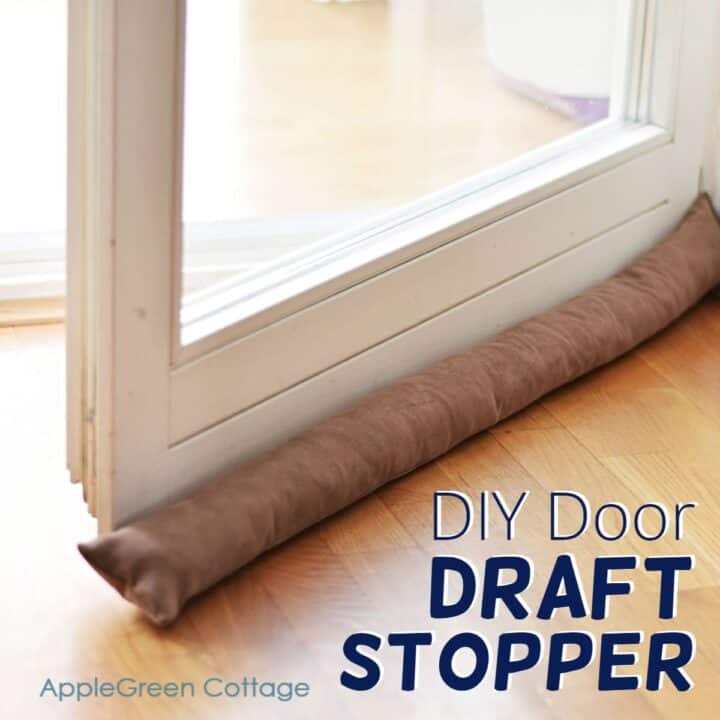
See tutorial:
They are long, stuffed fabric tubes placed at the base of doors or windows to block cold drafts, dust, and insects.
They are made with heavy cotton, canvas, or upholstery fabric; filling (rice, beans, sand, or polyfill).
To make it, sew a long fabric tube, stuff firmly, and close ends. Add handles or ties for convenience.
Variations are: Fun animal shapes (cats, dogs), seasonal prints (snowmen, pumpkins), farmhouse rustic.
They are very practical in winter and sell especially well in colder regions. Also double as cute home décor.
11. Tote Bags

See tutorial:
These are simple, sturdy carry-all bags used for books, shopping, or everyday use.
They are made with cotton canvas, denim, upholstery fabric, webbing (for straps), or matching fabric handles.
They can be made be having two fabric panels sewn together with boxed corners at the bottom for depth; add straps at the top.
Variations are reversible totes, lined totes, appliqué or embroidery designs, zippered closures.
They are useful because everyone needs totes. They’re reusable, customizable, and can be made in various sizes. Buyers love them as eco-friendly alternatives to plastic bags.
12. Drawstring Bags

They are versatile pouches that close with a drawstring; used for gyms, toys, shoes, or gift wrapping.
They are made with cotton fabric, cord/ribbon/rope for drawstring, optional lining for durability.
Try are made by sewing a simple fabric rectangle, fold casing at the top, thread drawstring through.
Some variation are: Small (gift bags), medium (kids’ backpacks), or large (sports/gym bags). Themed fabrics make them popular for kids.
They are lightweight, customizable, and appeal to all ages. Parents especially buy them for kids’ activities or storage.
13. Makeup Brush Rolls

See tutorial:
These are organizer with pockets for makeup brushes that rolls up neatly for travel or storage.
They are made with cotton fabric (inside and outside), interfacing for structure, ribbon or strap for closure.
They are made by having one fabric panel with stitched vertical channels for brushes, backed and bound, then rolled and tied.
Variations are padded versions, waterproof lining (for easy cleaning), elastic loops instead of fabric pockets.
They are compact and useful. Makeup enthusiasts and travelers love them; they make excellent gift items.
14. Zipper Pouches
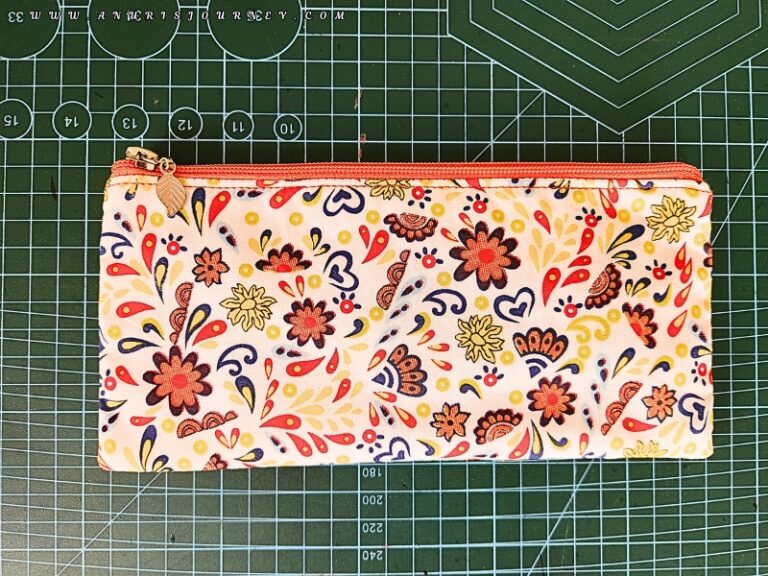
See tutorial:
They are small zippered bags for makeup, coins, pencils, or electronics accessories.
They are made with cotton fabric, interfacing or batting (for sturdiness), zipper.
To make it, sew fabric pieces with zipper in between, line inside, and topstitch for a clean finish.
Variations are: flat or boxed-bottom pouches, wristlet versions, patchwork or quilted.
They are extremely versatile, always in demand, and easy to sell at low-to-mid price points. Customers often buy multiples.
15. Reusable Shopping Bags
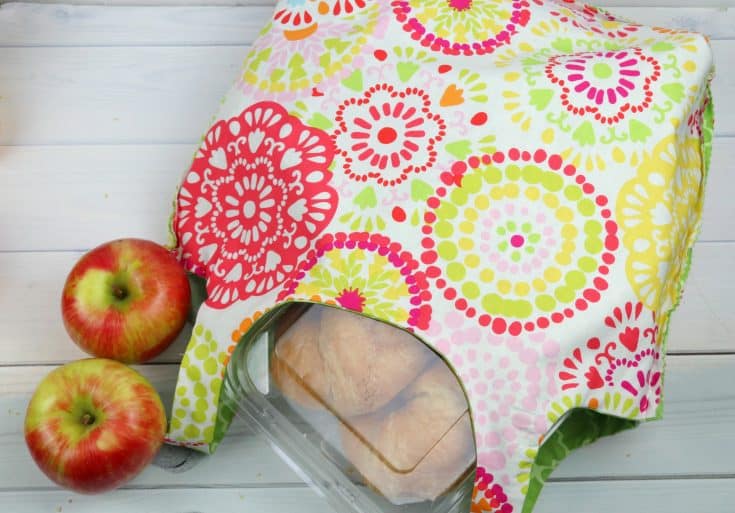
See tutorial:
These are foldable or sturdy bags for groceries and errands, replacing disposable plastic bags.
They are made with cotton, canvas, or ripstop nylon for lightweight foldable designs.
They are made by having simple bag shape with handles; foldable versions tuck into a small pouch.
Variations are: extra-large grocery totes, fold-up pocket totes, insulated shopping bags.
They are eco-friendly, useful for everyone, and often impulse buys when paired with fun prints.
16. Jewelry Pouches

See tutorial:
They are small pouches with multiple pockets for storing jewelry safely while traveling.
They can be made with cotton, satin, or velvet fabric, interfacing for structure, ribbon/cord drawstring.
It is a construction of circular or rectangular design with small stitched compartments, cinched closed with a drawstring.
Some variation are mini versions for rings/earrings, larger for necklaces/bracelets. Often made with luxe fabrics (silk, satin).
They are elegant, lightweight, and affordable. They appeal to travelers and make excellent gift items.
17. Hanging Fabric Wall Pockets
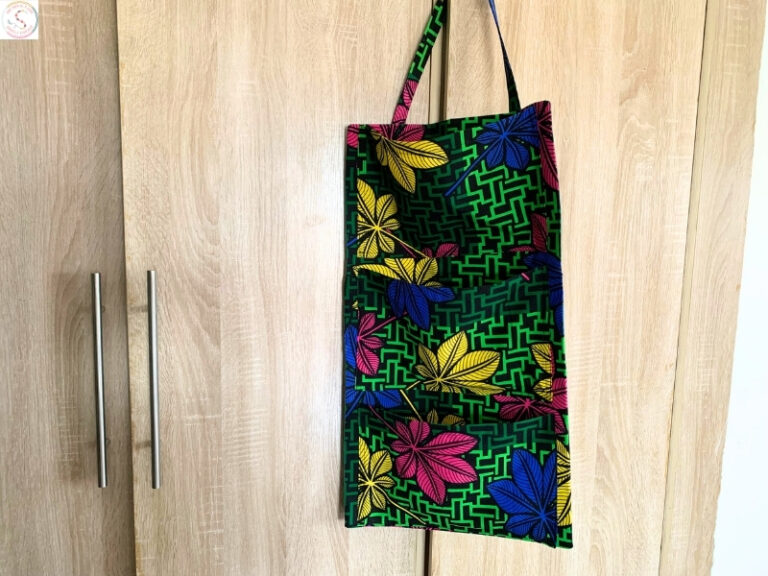
See tutorial:
They are wall organizers with fabric pockets to hold stationery, mail, kids’ toys, or craft supplies.
They can be made with sturdy cotton, canvas, denim, interfacing for structure, wooden dowel/rod for hanging.
They are made by making fabric backing with multiple sewn-on pockets; add loops or casing at the top for hanging.
Variations are: multi-pocket organizers for kids’ rooms, kitchen mail sorters, or craft organizers.
They are attractive storage solution; parents and crafters especially love them. They double as home décor.
18. Phone or Tablet Sleeves

These are soft padded cases to protect devices from scratches and bumps.
They are made with cotton or canvas fabric, batting or foam interfacing, Velcro/button/zipper closures.
They are made by constructing simple padded pouch with closure at the top, sized to fit common devices.
Variations are: wristlet strap, zipper vs. flap closure, waterproof lining for extra protection.
They are useful because everyone has a phone or tablet. Stylish handmade sleeves are appealing alternatives to generic store-bought cases.
19. Key Fob Wristlets

See tutorial:
These are small fabric wrist loops attached to keyrings; slip around the wrist for easy carrying.
They are made with cotton fabric, interfacing or webbing for stiffness, key fob hardware, metal clasp.
They are made by having a fabric strip folded, stitched, attached to hardware with pliers.
Variations are: quilted, embroidered, or patchwork designs. Often made with fabric scraps.
They are very quick and cheap to make. Perfect low-cost impulse buy at craft fairs.
20. Laundry Bags

These are large lightweight fabric bags used to hold dirty laundry, especially for students, travelers, and gym-goers.
They are usually made with cotton, canvas, or mesh fabric, drawstring or cord
To make it, sew large fabric rectangles into a sack, add casing for drawstring at the top.
Variations are: monogrammed laundry bags, mesh panels for breathability, backpack-style straps.
They are practical for students, dorm living, or travel. Parents often buy them for kids.
21. Scrunchies
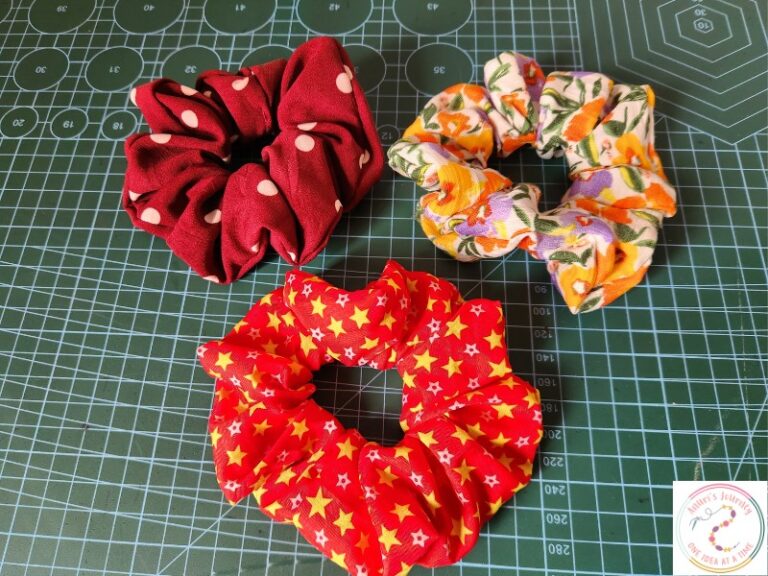
See tutorial:
These are elastic fabric-covered hair ties that are gentle on hair and stylish.
They are made with cotton, satin, silk, or velvet fabric; elastic band; thread.
To make it, sew a fabric tube, turn right side out, thread elastic inside, and close ends.
Variations are: oversized scrunchies, skinny scrunchies, bow-tied scrunchies.
They are cheap to make, trendy again, and customers often buy multiples. Great scrap-buster project.
22. Headbands

They are fabric headpieces worn for fashion or to keep hair in place.
They are often made with cotton, knit fabric, elastic (for back portion), or stretch fabrics.
To make one, sew a fabric strip with elastic casing at the back for stretch.
Variations are: twisted headbands, wide yoga-style headbands, knotted designs.
They are quick to make, popular among kids, teens, and adults. They’re low-cost impulse buys.
23. Infinity Scarves

See tutorial:
These are circular loop scarves worn for warmth or as a style accessory.
They are made with cotton, knit fabric, jersey, flannel, or lightweight chiffon for summer.
To make it, sew a long rectangle into a tube, then join ends together to form a loop.
Some variation are: Double-loop scarves, reversible scarves, lightweight or cozy winter versions.
They are stylish, practical, and great for seasonal craft fairs (especially fall/winter).
24. Fabric Belts or Sashes
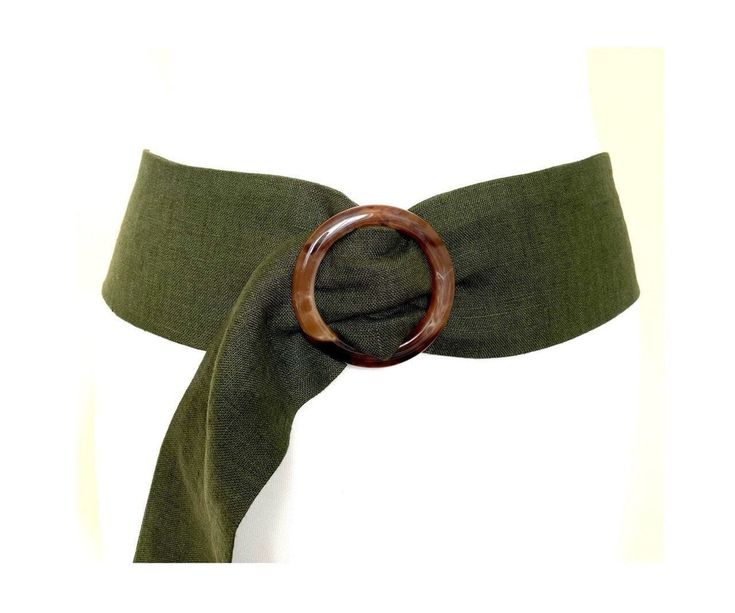
These are long fabric strips used as waist belts or fashion sashes.
They are often made with cotton, satin, denim, or upholstery fabric; interfacing for stiffness.
To make one, sew a long fabric strip, turn inside out, and topstitch for a clean finish. Add D-rings or ties.
Variations are: obi-style belts, reversible sashes, child-size or adult-size versions.
They are unique accessory, customizable with prints, and great for pairing with dresses.
25. Sleep Masks
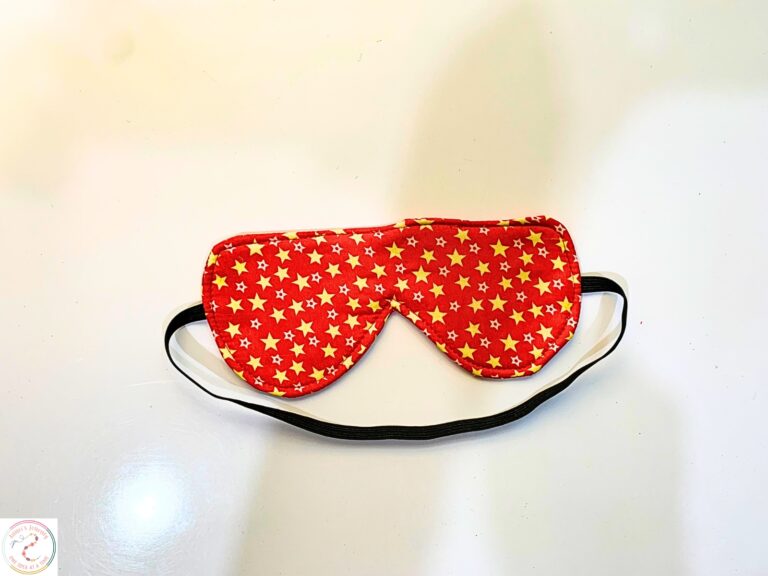
See tutorial:
These are padded fabric eye masks that block light for sleep or relaxation, and also one of the easy sewing projects to make and sell at craft fairs.
They are made with cotton fabric, batting/fleece for padding, elastic band, optional satin lining.
To make it, cut fabric in eye mask shape, sew with padding and elastic, then finish edges.
Variations are: aromatherapy versions with lavender filling, satin luxury versions, novelty designs (animal faces, funny quotes).
They are Popular as self-care gifts, travel accessories, and spa-themed items.
26. Simple Skirts (Elastic-Waist)
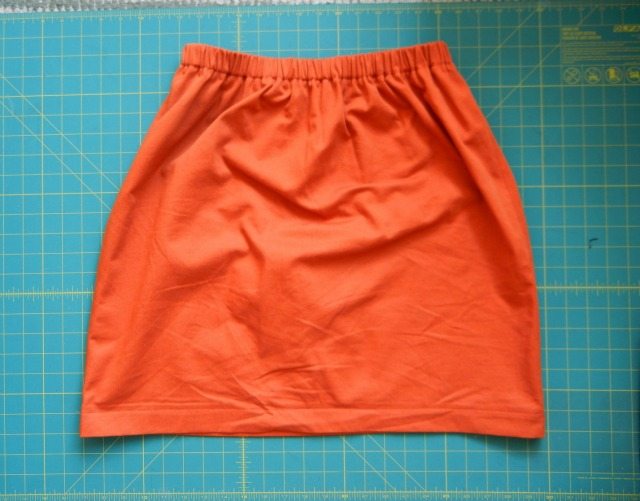
See tutorial:
These are easy-to-wear skirts that stretch to fit with an elastic waistband.
They are often made with cotton, jersey knit, chiffon, or lightweight fabrics; elastic for waistband.
They are made by making a long fabric rectangle gathered at the waist with elastic casing.
Variations are: Mini, midi, maxi length; layered or ruffled versions; kids’ and adult sizes.
They are comfortable, easy to size, and great for kids. Parents love buying handmade skirts at fairs.
27. Baby Bibs

See tutorial:
These are absorbent cloths worn around a baby’s neck to protect clothes while eating or drooling.
They are made with cotton or flannel (front), terry cloth/fleece (back), snaps or Velcro for closure.
They are made by having two fabric layers cut in bib shape, sewn together with fastener at neck.
Variations are: bandana-style bibs, appliquéd or embroidered bibs, reversible bibs.
They are always in demand—babies constantly need bibs. Great gifts for baby showers.
28. Baby Burp Cloths
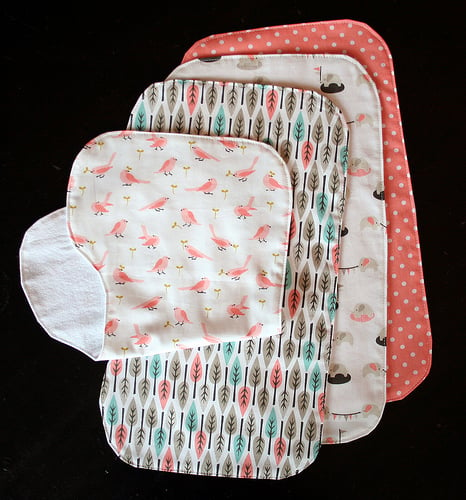
See tutorial:
These are cloths used over the shoulder while burping babies to catch spit-ups.
They are made with cotton or flannel (front), terry cloth/fleece (back).
They are made by having a rectangular or contoured shape sewn with two layers of absorbent fabric.
Variations are: embroidered initials, themed fabric sets, contoured shoulder shapes.
They are every parent needs several. They’re affordable, giftable, and often sold in bundles.
29. Baby Frock Dresses

See tutorial:
These are lightweight, pretty dresses for babies and toddlers.
They are made with cotton, linen, or light fabrics; elastic or snaps for closures.
They are made by making simple bodice with gathered skirt; elastic at back or shoulders for comfort.
Variations are: Ruffle sleeves, smocked bodices, reversible dresses.
They are useful because handmade baby clothes are highly appealing at craft fair, parents and grandparents love them as gifts.
30. Kids’ Capes (Play Costumes)



























